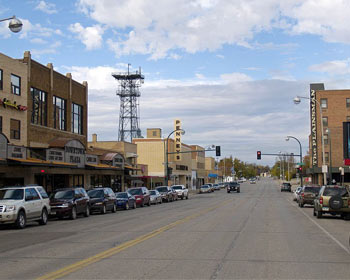Research Reports
Report Details
Abstract
 Discoveries of shale gas reserves along with the development of horizontal drilling and hydraulic fracturing techniques, as well as the initiative to move the United States toward greater energy independence led to the most recent oil boom in western North Dakota (U.S. Congress 2007). Overall, the boom brought a billion-dollar surplus for the state budget in North Dakota from severance taxes and extensive mineral rights. The population doubled in some areas, e.g., the city of Williston grew by 67% from 2010 to 2014 (Scheyder 2016). After almost a decade of production of North Dakota shale oil, prices dropped from about $100 a barrel in 2014 to about $30 in early 2016 and the industry went into the bust portion of the economic cycle where oil production and affiliated employment and spending contracted and where the industry and state are waiting for crude oil prices to rise again (Scheyder 2016).
Discoveries of shale gas reserves along with the development of horizontal drilling and hydraulic fracturing techniques, as well as the initiative to move the United States toward greater energy independence led to the most recent oil boom in western North Dakota (U.S. Congress 2007). Overall, the boom brought a billion-dollar surplus for the state budget in North Dakota from severance taxes and extensive mineral rights. The population doubled in some areas, e.g., the city of Williston grew by 67% from 2010 to 2014 (Scheyder 2016). After almost a decade of production of North Dakota shale oil, prices dropped from about $100 a barrel in 2014 to about $30 in early 2016 and the industry went into the bust portion of the economic cycle where oil production and affiliated employment and spending contracted and where the industry and state are waiting for crude oil prices to rise again (Scheyder 2016).
Transit livability index measures showed large increases from 2008 to 2012 followed by overall corrections from 2013 to 2016. These measures declined as oil production and economic advances diminished. Further, transit fleet size failed to increase with population growth, and pedestrian safety has become a concern along both rural and city highways. System dynamics simulations focused on potential mode shifts from private automobile to transit, finding that seemingly small shifts (1-2%) from auto to transit would result in millions of dollars of fuel savings in the oil patch alone.
Various models of either fixed-route or flex-route busing should be considered by transit agencies and local policy makers for the larger communities of Williston and Dickinson, while more rural providers need to update their fleets to meet demand as well. Because of recent cutbacks in state and local funding, agencies should also strive to better coordinate services while continuing to provide rides to county population centers that offer goods and services required by rural residents.